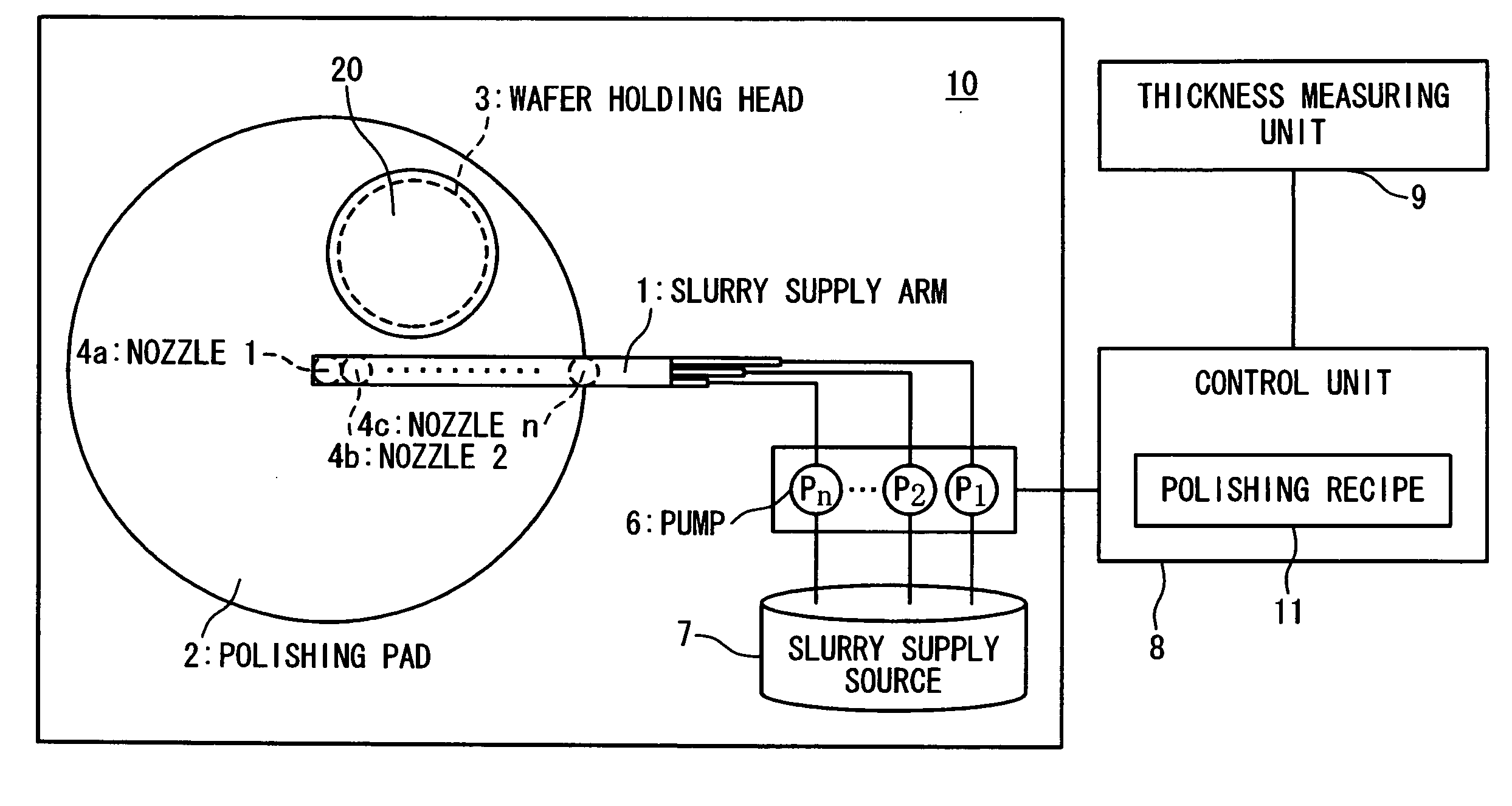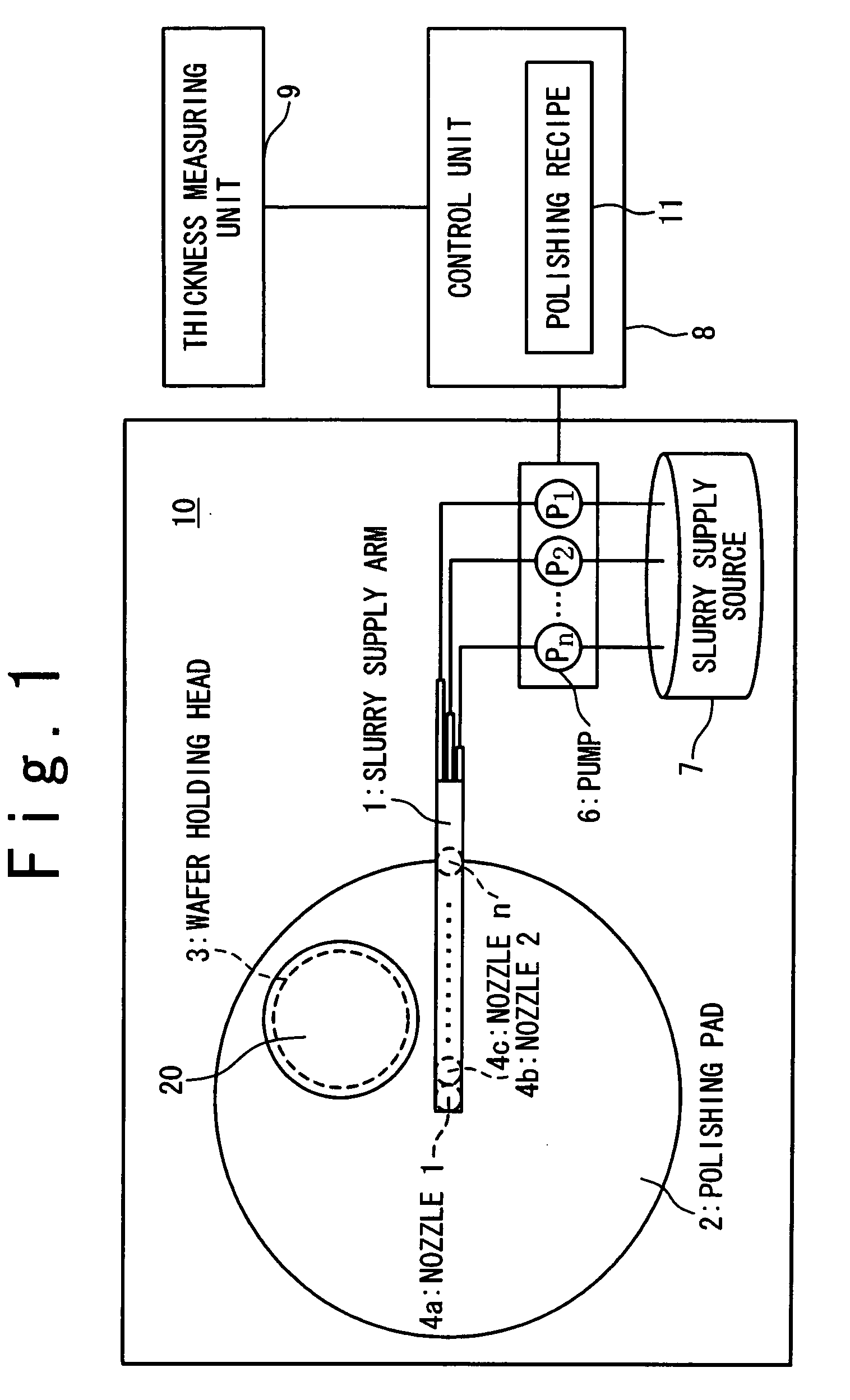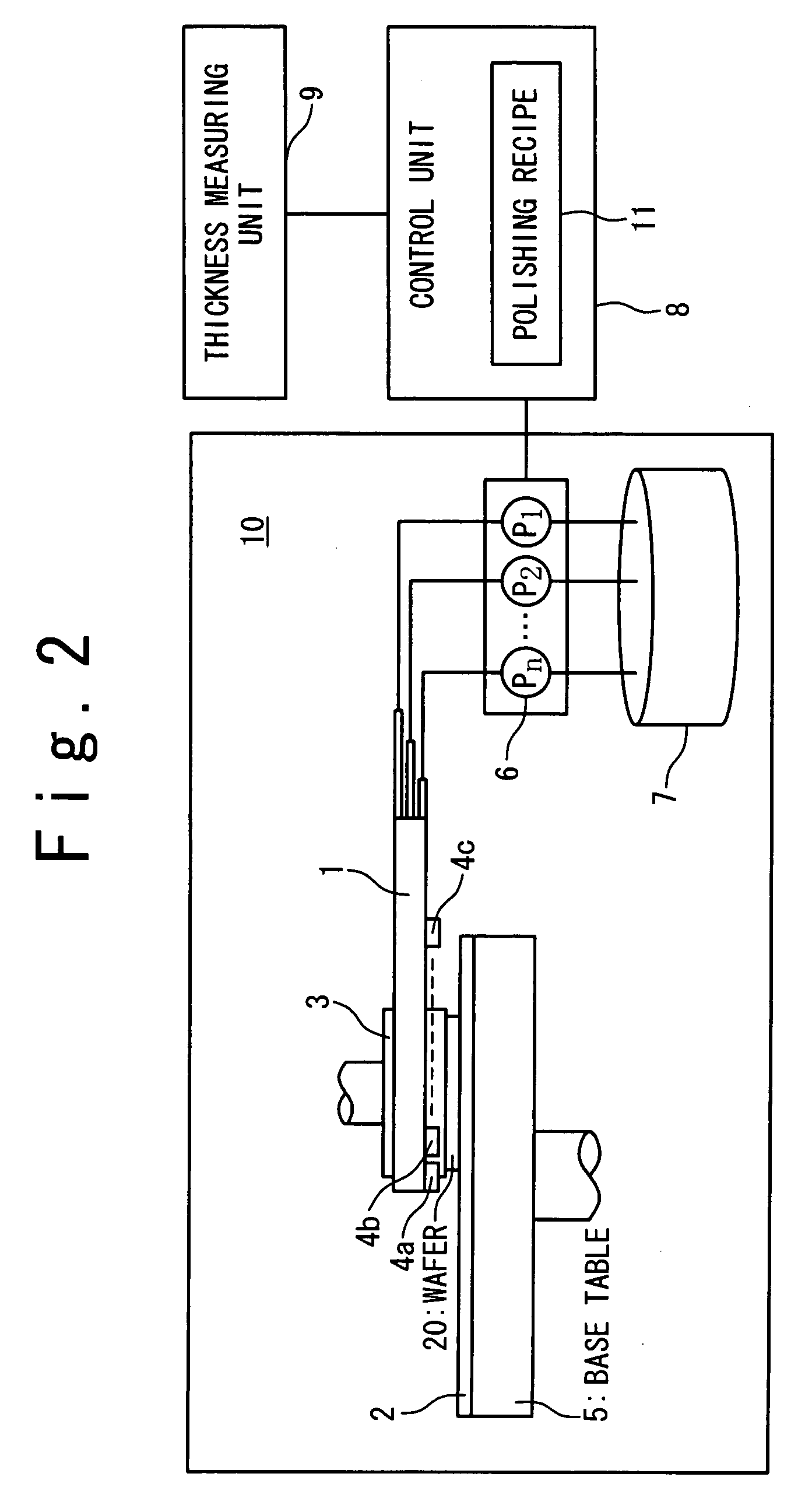Polishing apparatus and method of controlling the same
- Summary
- Abstract
- Description
- Claims
- Application Information
AI Technical Summary
Benefits of technology
Problems solved by technology
Method used
Image
Examples
Embodiment Construction
[0029]Hereinafter, a polishing apparatus according to the present invention will be described in detail with reference to the attached drawings. FIG. 1 is a top view showing the configuration of a polishing unit 10 according to this embodiment, and FIG. 2 is a front view showing the polishing unit 10 in this embodiment. The polishing apparatus for a CMP (Chemical Mechanical Polishing) operation whose polishing target is a semiconductor wafer 20 will be described as an example.
[0030]The polishing apparatus has a polishing unit 10, a control unit 8, and a thickness measuring unit 9. The polishing unit 10 has a slurry supply arm 1, a polishing pad 2, a wafer holding head 3, a plurality of nozzles 4 (4a, 4b to 4c), a base table 5, a plurality of pumps 6, and a slurry supply source 7. Also, the control unit 8 has a polishing recipe 11. The details of the respective components will be described below.
[0031]The base table 5 has the shape of a circular plate. The base table 5 is rotated in ...
PUM
| Property | Measurement | Unit |
|---|---|---|
| Thickness | aaaaa | aaaaa |
| Flow rate | aaaaa | aaaaa |
Abstract
Description
Claims
Application Information
 Login to View More
Login to View More - R&D
- Intellectual Property
- Life Sciences
- Materials
- Tech Scout
- Unparalleled Data Quality
- Higher Quality Content
- 60% Fewer Hallucinations
Browse by: Latest US Patents, China's latest patents, Technical Efficacy Thesaurus, Application Domain, Technology Topic, Popular Technical Reports.
© 2025 PatSnap. All rights reserved.Legal|Privacy policy|Modern Slavery Act Transparency Statement|Sitemap|About US| Contact US: help@patsnap.com



